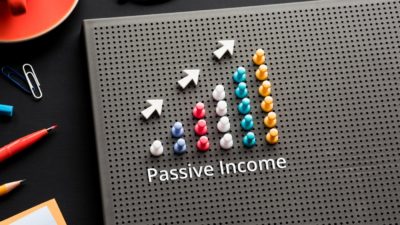Many investors like to back fast-growing companies.
They perennially hope to discover the next multi-bagging growth winner like Apple, ASOS (LSE: ASC) or Just Eat (LSE: JE).
Owning sizeable stakes in just one or two such companies that multiply in value 5-10 times in a decade can do wonders for your returns.
But getting the most out of growth stocks is a lot easier said then done.
Look out below!
The most common pitfall is that you decide to put money into a growth company too late in the day, shortly before the rapid expansion in earnings dries up.
This often happens when a company reports a slightly uncertain outlook and the share price declines 5-10%.
“Aha!” you think. “My time at last to be greedy when others are fearful, and to buy into this long-term growth story!”
But what if the market has correctly intuited that the wheels are in fact coming off the company’s long expansion?
The problem then is that you’ve almost certainly paid a premium to buy into the growth story – as represented by a lofty P/E rating of 30 or more – and that the 5-10% ‘bargain’ share price discount you were so proud of snagging will provide you with very little buffer if the market decides to re-rate the shares.
If growth in profits declines to a more normal and pedestrian 10% a year, a P/E rating of 10 to 15 might be deemed more appropriate.
That alone could see your investment halve in value!
Passive income stocks: our picks
Do you like the idea of dividend income?
The prospect of investing in a company just once, then sitting back and watching as it potentially pays a dividend out over and over?
If you’re excited by the thought of regular passive income payments, as well as the potential for significant growth on your initial investment…
Then we think you’ll want to see this report inside Motley Fool Share Advisor — ‘5 Essential Stocks For Passive Income Seekers’.
What’s more, today we’re giving away one of these stock picks, absolutely free!
Glory days
Most growth companies eventually de-rate, as they saturate their market, attract competition, or simply become too big to compound as rapidly as they did in the early years.
They may carry on being perfectly respectable businesses – and even fine shares to own for their dividend credentials, say – but their growth days are behind them.
Indeed, most big FTSE 100 companies were at some earlier stage growth companies, although in many cases you’d have to go back decades to find their wild and crazy go-go years.
A somewhat recent example would be Vodafone (LSE: VOD).
Vodafone is now the quintessential boring FTSE 100 behemoth.
However, back in the 1990s it was a darling of growth investors, as its share price multiplied tenfold with surging mobile phone use.
Stomach churners
But there’s another kind of company that growth investors need to be wary of – and it’s a particular bugbear of mine in discussions among the analysts here at The Motley Fool.
And that’s when what’s called a growth company is really a cyclical company in disguise.
As the name suggests, a cyclical company is one whose fortunes rise and fall according to a cycle. (Usually a somewhat unpredictable cycle, with the market always doing its best to make things tricky.)
Classic examples of cyclical firms would be auto manufacturers, steel producers, and the vast majority of firms in the commodity sector.
Look at the following earnings per share record (the company reports in dollars and cents, but it’s a London-listed firm):
| Year | Earnings per share |
| 2008 | $0.19 |
| 2009 | $0.45 |
| 2010 | $0.93 |
| 2011 | $1.26 |
With earnings up more than five-fold in just four years, this might seem like a great growth stock.
And in fact, when the shares began to wobble in 2012, I did hear investors use a favourite growth investing metric – the PEG ratio – to argue that this company’s shares were cheap.
The PEG ratio compares the P/E multiple to the forecast earnings growth rate.
If the company is expected to keep growing earnings at a decent clip while at the same time the shares trade at a P/E ratio that seems to underrate such expansion, it can make a company appear inexpensive, according to this PEG measure.
Down, down, deeper and down
However, look what happened to earnings at the same firm over the next few years:
| Year | Earnings per share |
| 2012 | $1.03 |
| 2013 | $0.33 |
| 2014 | $0.15 |
As you can see, they collapsed – and in fact, by the end of 2014 earnings were actually lower than they had been back in 2008!
This is a very different situation to the de-rating of a true growth company, which matures into a respectable low-growth one.
In those situations, earnings growth slows or plateaus. But here we see earnings absolutely obliterated.
No, this is classic cyclical company behaviour.
Not so golden
If I tell you that the company in question is silver and gold mining firm Fresnillo (LSE: FRES) and you think about the fall in precious-metals prices since 2012, then this coincident decline in its earnings will not come as a surprise.
And while it’s easy only in hindsight to see why earnings fell – because in truth it wasn’t so clear that the silver and gold price would collapse – nobody should have ever mistaken Fresnillo for anything other than a cyclical company.
In practice some did, especially with gold bugs talking up the end of our financial system as we know it, and thus claiming the gold price had reached a permanently higher level.
Such false explanations are very typical at the top of a cycle – another variation of the old “this time it’s different” theme.
Let’s be careful out there
Where it gets still trickier is with companies that operate at one or two steps removed from what’s clearly a cyclical sector.
For example, many diversified engineers who produce components for the oil and gas industry have seen their earnings severely dented in the past year by the pressures in the energy sector.
Yet had you asked them a couple of years ago, I’d wager plenty of private investors who owned the shares wouldn’t have thought much about the impact of the commodity cycle on their down-to-earth “metal bashing” investment at all.
The takeaway message is to think seriously about why a fast-growing firm is actually managing to generate an explosion in sales.
Has it got a new product, or made some other breakthrough – such as entering a lucrative and potentially vast new geography?
Or is it just riding the upswing in a cycle, and perhaps disguising that reality in how it explains its operations and income to shareholders?
Remember a roller-coaster has its ups, but it also has its downs!







